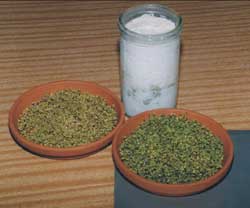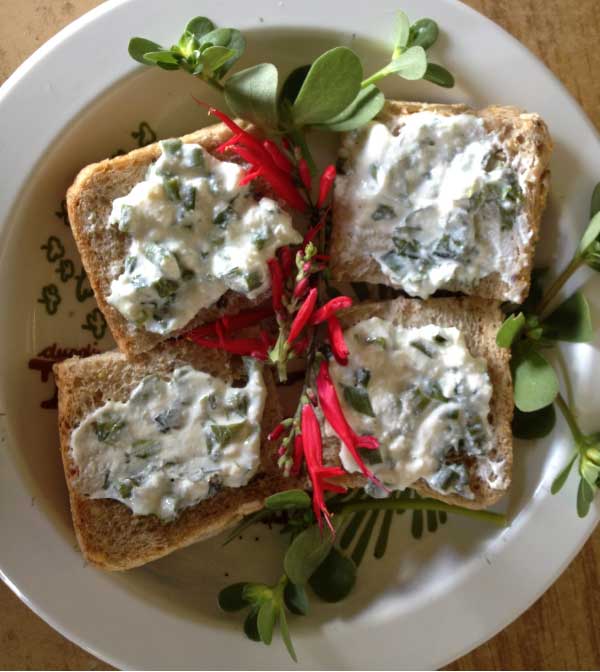Description
Kefir (pronounced kee-fur) is easy to grow, but it is not a plant. If fed, kefir will grow very well, and when eaten, is esteemed as being easily digested and extremely valuable for health and well-being.
Kefir is made from a starter (also called a plant, curd, grains, or culture), microorganisms that produce kefiran, a polysaccharide gum that holds together the bacteria and yeast in kefir grains. The starter may be composed of milk casein, yeasts (Kluyveromyces fragilis, Candida kefyr) and bacteria (Streptococcus kefir, S. lactis, Lactobasillus causasicus, L. acidophilus, L. bulgaricus), providing antibiotic properties and a probiotic action, promoting vital life. To make it grow, the starter is fed milk.

The yeasts and bacteria live symbiotically, both benefiting by living in close relationship. When incubated in milk at room temperature, both grow quickly, passing through a fermentation process. This fermentation produces a small quantity of alcohol from the lactobaccilli (around 1%), as well as carbonic acid and lactic acids, peptones, amino acids and enzymes which assist digestion. Kefir converts the lactose in the milk to lactic acid, which is beneficial to the bowel.
Research indicates kefir can clear chlorine and other detrimental chemicals from water. Kefir stimulates the flow of saliva, and increases the digestive juices in the gastrointestinal tract, as well as stimulating peristalsis of the bowel.
Danish bacteriologist, Dr. Orla-Jenson, expressed the opinion that kefir has a higher nutritive value than yoghurt due to the abundance of yeast cells digested and the highly beneficial effect on the intestinal flora. Kefir has been found most effective against some virulent pathogenic organisms. Another researcher, Professor Kanschlikov, who devoted much of his life to kefir research, observed its healing effects on many disorders, including catarrh, stomach ulcers, digestive ailments, anemia, arterial nodes, high blood pressure, bilious complaints, hepatitis, diarrhea, constipation, and eczema. Not only does it aid the digestion, but helps to stabilise intestinal flora, and the synthesis of many B vitamins in the intestine. Kefir helps to prevent putrefaction of material in the intestines, and has had a history of use for wellbeing and longevity.
Researchers have found kefir will alkalise the mouth, for this reason eating some before a meal is most beneficial, which will then set in motion the pre-digestion of food in the mouth. Protein in kefir is partially digested in the fermentation action of the growing kefir and so is better utilized by the body. Tryptophan, an essential amino acid, important in the balance and response of the nervous system, is abundant in kefir. Kefir’s rich calcium and magnesium content are also valuable to the nervous system, aiding the ability to cope under stress, and having a profound calming effect on the nerves. Kefir has helped people who suffer with mood swings, depression, hyperactivity, attention deficit and sleep disorders. It is also a good source of phosphorus, helping to metabolise carbohydrates, fats, and proteins for cell development, maintenance and energy. It is a rich source of vitamin B1, B12 and K. It is an excellent source of biotin (which is closely related to all vitamin B’s) and is essential to the normal cell growth process, maintenance, repair and growth of bones.

Kefir is recognised as a balanced and nourishing food, which can contribute to the health of the immune system. It has been given to people suffering with chronic fatigue syndrome, herpes, AIDS, and cancer. With regular use, kefir can help to relieve flatulence, intestinal disorders and regulate bowel movement. It is beneficial for anyone sick, convalescing, after taking antibiotics, and often recommended by natural health practitioners.
… … omitted text, please see How can I use HERBS in my daily life? for full text.


